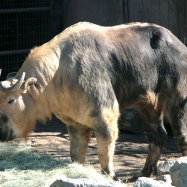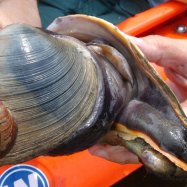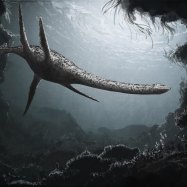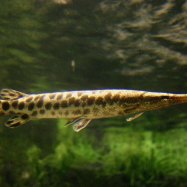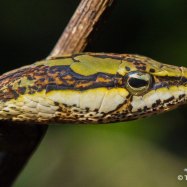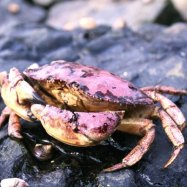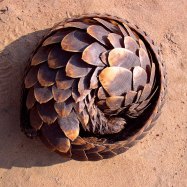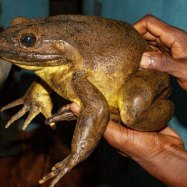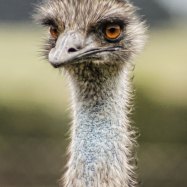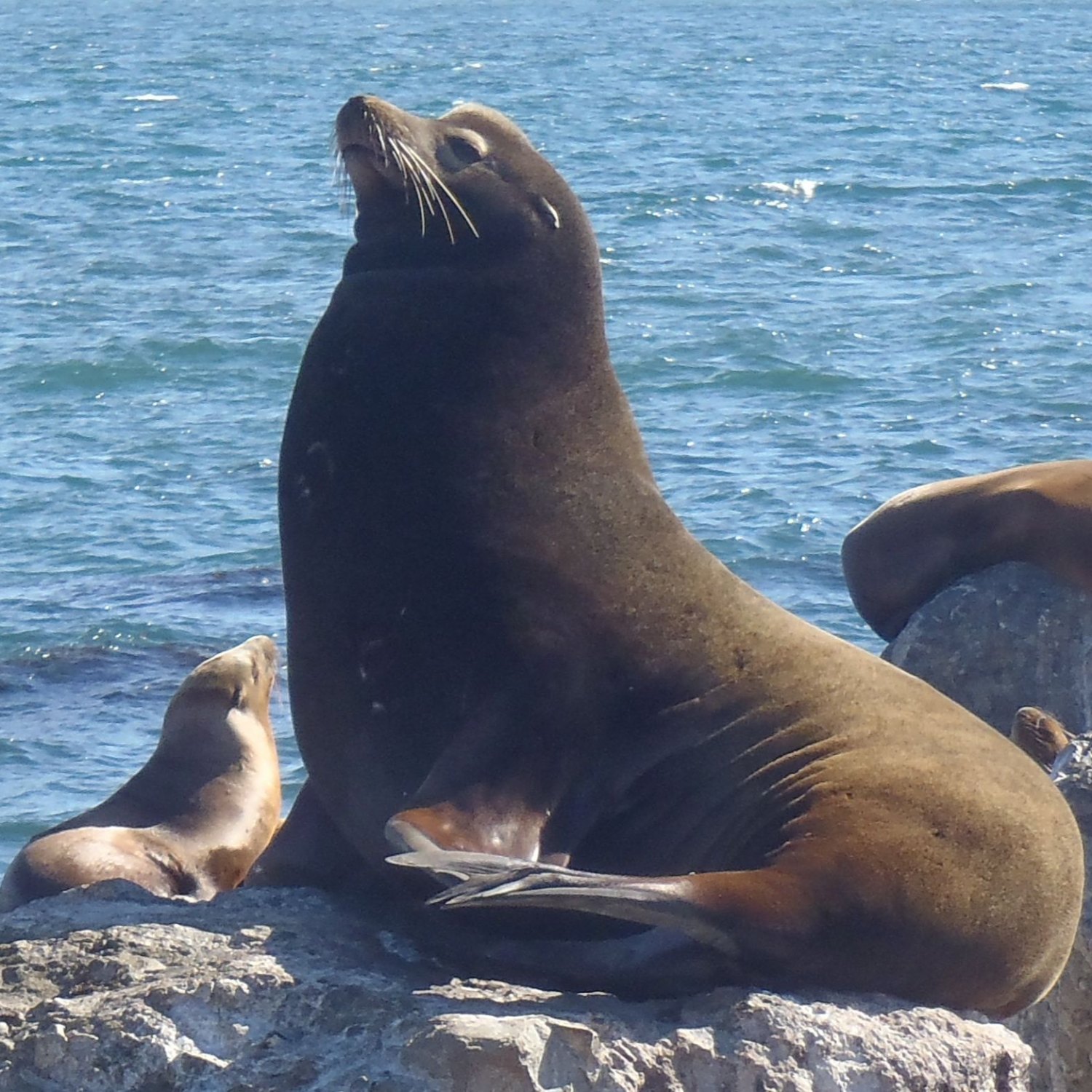
Sea Lion
6-8 feet
The sea lion, found in the Pacific Ocean, is a fascinating animal with a streamlined and elongated body. Belonging to the Otariidae family, these creatures can grow up to 6-8 feet in length. Their curious and playful nature makes them a popular sight along the coast. Keep an eye out for these majestic creatures on your next visit to the Pacific! #sealife #oceananimals #sealions
Animal Details Summary:
Common Name: California Sea Lion
Kingdom: Animalia
Habitat: Coastal areas, rocky shores, sandy beaches
The Misunderstood Marvel: The Fascinating California Sea Lion
The ocean is a vast and mysterious world, filled with countless creatures that capture our imaginations and ignite our curiosity. One such creature is the California Sea Lion, a magnificent marine mammal with a captivating presence and a rich history.Known scientifically as Zalophus californianus, the California Sea Lion is a member of the order Carnivora, and the only species in the genus Zalophus. They are commonly seen along the western coast of North America, from the Pacific Northwest to the Baja California peninsula, making their home in coastal areas, rocky shores, and sandy beaches Sea Lion. These charismatic animals are known for their playful nature, sleek appearance, and remarkable prowess in the water.
Evolution and Physical Characteristics
The California Sea Lion is a unique creature that has evolved to thrive in the marine environment. They belong to the family Otariidae, which includes all sea lions and fur seals. This family is distinct from true seals, as they have external earflaps and the ability to rotate their hind flippers forward, allowing them to walk on land.One of the most striking features of the California Sea Lion is its body shape. They have a streamlined and elongated body, which is perfect for navigating through the water with ease. Their long, powerful front flippers, which make up a significant portion of their body length, are used for steering and propelling through the water. In contrast, their rear flippers act as rudders, helping them to maintain balance and control.
These impressive animals can reach lengths of 6-8 feet and weigh anywhere from 300 to 800 pounds Seagull. Despite their hefty size, they are surprisingly graceful in the water, performing acrobatic maneuvers and swimming at remarkable speeds.
Habitat and Distribution
The California Sea Lion is a master of the ocean, and it can be found in many coastal areas around the globe. However, their primary range is along the western coast of North America, from the Pacific Northwest to Baja California. They can also be found in Central America, specifically on the Galapagos Islands.In their natural habitat, California Sea Lions are often found on rocky shores and sandy beaches, where they can easily haul out and rest. They prefer to live in coastal areas with access to both land and water, making it easier for them to hunt for food and take shelter when needed.
Diet and Feeding Habits
One of the most intriguing aspects of the California Sea Lion is its feeding method. As its name suggests, this animal is a carnivore, meaning that it feeds on other animals. They have a diverse diet, which includes fish, squid, octopus, and crustaceans.But what makes the California Sea Lion stand out is its unique hunting technique. These intelligent creatures work together, using their streamlined bodies and impressive swimming abilities to herd fish, making it easier to catch their prey. This cooperative hunting behavior is a testament to their immense social intelligence.
Behavior and Communication
California Sea Lions are highly social animals, and they live in large colonies made up of hundreds or even thousands of individuals. They form deep bonds with other members of their colony, and they are known for their playful and interactive behavior.One of the most fascinating aspects of this creature's behavior is their vocalizations. California Sea Lions are known for their loud, barking calls, which can be heard from far distances. These vocalizations play a crucial role in communication between individuals, especially for males during mating season when they use their deep roars to establish dominance.
Conservation Status
The California Sea Lion has a stable population and is classified as least concern on the IUCN Red List. However, this does not mean that they are not facing any threats. Human activities such as overfishing, pollution, and climate change have a significant impact on their habitat and food supply. As a result, measures have been put in place to protect these animals, including designated marine protected areas and regulations to limit commercial fishing.Human Interactions and Symbolism
Throughout history, the California Sea Lion has played a significant role in human culture, often being viewed as both a revered and feared creature. In Native American folklore, they are believed to possess magical and healing powers. In contrast, for early European explorers, they were a source of food and oil.Today, California Sea Lions are a popular attraction in coastal regions, with many commercial operations offering tourists the opportunity to see these incredible animals up close. However, it is essential to remember that these are wild animals and should be treated with respect and caution.
In popular culture, this animal has become a symbol of intelligence, adaptability, and playfulness. They have been featured in movies, books, and even on the Canadian one-dollar coin. In the United States, they hold a special place in the hearts of Californians, as they are the official marine mammal of the state and can be found on the state's flag and seal.
Conclusion
In conclusion, the California Sea Lion is a fascinating and misunderstood creature that holds a special place in the hearts and minds of many. They are intelligent, social, and adaptable animals, with a unique set of physical and behavioral characteristics that make them stand out among other marine mammals.Preserving the oceans and protecting the California Sea Lions' natural habitats and food sources is crucial for their survival and for the health of our marine ecosystems. We must continue to educate ourselves and raise awareness about the importance of conservation efforts to ensure a sustainable future for these magnificent creatures and all the other marine life that calls the ocean home.

Sea Lion
Animal Details Sea Lion - Scientific Name: Zalophus californianus
- Category: Animals S
- Scientific Name: Zalophus californianus
- Common Name: California Sea Lion
- Kingdom: Animalia
- Phylum: Chordata
- Class: Mammalia
- Order: Carnivora
- Family: Otariidae
- Habitat: Coastal areas, rocky shores, sandy beaches
- Feeding Method: Carnivorous
- Geographical Distribution: North America, Central America
- Country of Origin: United States, Mexico, Canada
- Location: Pacific Ocean
- Animal Coloration: Yellowish brown to dark brown
- Body Shape: Streamlined and elongated
- Length: 6-8 feet
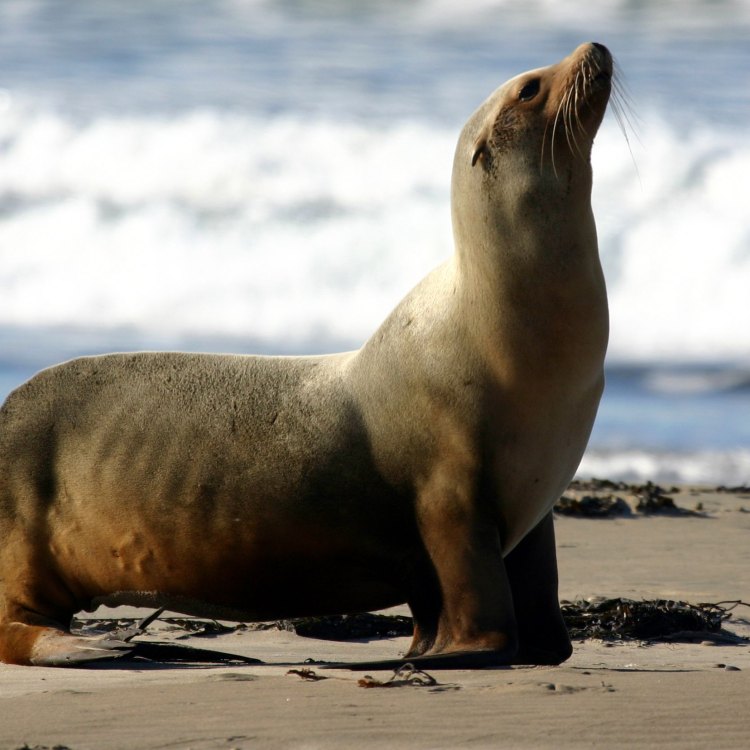
California Sea Lion
- Adult Size: 440-660 pounds
- Average Lifespan: 18-25 years
- Reproduction: Sexual
- Reproductive Behavior: Polygynous
- Sound or Call: Barks, growls, roars
- Migration Pattern: Migratory
- Social Groups: Colonies
- Behavior: Social, playful, agile
- Threats: Hunting, habitat loss, pollution
- Conservation Status: Least Concern
- Impact on Ecosystem: Top predators, maintain balance in marine ecosystems
- Human Use: Entertainment, research
- Distinctive Features: External ear flaps, long front flippers
- Interesting Facts: Male sea lions are larger than females and have a distinctive bump on their forehead called a sagittal crest.
- Predator: Great white sharks, killer whales

Zalophus californianus
The Majestic Sea Lion: An Iconic Predator of the Ocean
The ocean is an incredible and diverse ecosystem, full of fascinating creatures that play important roles in maintaining its balance. Among these creatures, the sea lion stands out as a unique and powerful predator, with its iconic physical features and distinctive behaviors. From its graceful agility in the water to its loud barks and growls, the sea lion is a captivating creature that has captured the hearts of humans for centuries. In this article, we will delve into the world of the sea lion, exploring its physical characteristics, behaviors, threats, conservation efforts, and its impact on the ecosystem PeaceOfAnimals.Com.The Physical Features of Sea Lions
Sea lions are a type of marine mammal belonging to the family of pinnipeds, which also includes seals and walrus. They are divided into two main categories: the Otariidae, also known as the "eared seals," which includes sea lions, and the Phocidae, known as "true seals." One of the most distinctive features of sea lions is their external ear flaps, which are absent in true seals. These ear flaps are called pinnae and are much more visible in males than in females.In terms of size, adult sea lions can weigh anywhere between 440 to 660 pounds, with males being larger than females. One of the unique physical traits of male sea lions is the presence of a sagittal crest, a pronounced bump on their forehead that gives them a distinguished appearance. This crest is a result of their strong neck muscles that they use during their mating behaviors.
When it comes to their appearance, sea lions have a slender, streamlined body that is perfect for swimming in the ocean. They have a dark brown or tan fur with lighter shades on their belly Skua. Their front flippers, which are considerably longer than their hind flippers, play a crucial role in their swimming and hunting abilities, making them incredibly agile in the water.
The Life of a Sea Lion: Behaviors and Social Life
Sea lions are social creatures that form colonies in specific areas, usually on rocky islands or secluded beaches. These colonies can range in size, with some consisting of just a few hundred individuals, while others can have thousands of sea lions living together. Within these colonies, sea lions form smaller social groups based on their gender and age. Males, for example, may form bachelor groups, while females and their young tend to stay together in maternal groups.One of the most intriguing behaviors of sea lions is their reproductive behavior. They are polygynous, meaning that a single male can mate with multiple females. During the breeding season, males engage in fierce battles over territories and females, often using their teeth and flippers to assert dominance. Female sea lions give birth to a single pup, which they nurse for about a year before weaning them. This reproductive cycle lasts for about 18-25 years, depending on various factors such as food availability and environmental conditions.
Apart from their reproductive behavior, sea lions are also known for their playful and social nature. They are often seen interacting with one another, playfully nipping and pushing each other in the water. They are also incredibly agile, and their acrobatic displays are a sight to behold. Their agility, combined with their powerful senses and underwater vision, makes them excellent hunters, with their diet mainly consisting of fish and octopus.
Threats to the Sea Lion Population
Despite their strength and adaptability, sea lions face various threats that have significantly impacted their population numbers. One of the most significant threats to sea lions is human activities, such as hunting, habitat loss, and pollution. In the past, sea lions were heavily hunted for their fur and oil, which brought their population numbers dangerously low. Although hunting of sea lions is now prohibited, they are still at risk of being caught in fishing nets or becoming entangled in marine debris, which can lead to their death.The loss of suitable habitats, especially due to human development and pollution, has also had a significant impact on sea lions. Sea lions rely on specific breeding sites and haul-out areas, designated spots where they rest and socialize. When these areas are disturbed or destroyed, it can severely disrupt their reproductive behaviors and social structures. In addition, pollution in the ocean, particularly plastic waste, can injure or even kill sea lions.
Conservation Efforts to Protect Sea Lions
Thankfully, concerted conservation efforts have been put in place to protect sea lions and their habitats. For example, the Marine Mammal Protection Act of 1972 in the United States strictly prohibits the hunting, harassment, and killing of sea lions and other marine mammals. This act has played a significant role in the successful recovery of the sea lion population.Furthermore, various organizations and researchers are working tirelessly to mitigate threats to sea lions and their habitats. These efforts include beach clean-ups, reducing marine debris, and educating the public about the importance of preserving the ocean's ecosystems.
The Essential Role of Sea Lions in the Ecosystem
Sea lions are top predators in the ocean, playing a crucial role in maintaining the balance of marine ecosystems. Through their diet, they help control the population of their prey, preventing overpopulation in the ocean. This, in turn, helps maintain the health of the ocean, as an imbalance in one species can have a cascading effect on the entire ecosystem.In addition, sea lions also contribute to nutrient cycling in the ocean through their feces, providing vital nutrients that promote the growth of vital microorganisms. Furthermore, the presence of sea lions in specific areas can also indicate the health of the surrounding environment, as they are sensitive to changes in water quality and food availability.
The Human Connection to Sea Lions
The history of humans and sea lions goes back centuries, with evidence of humans using sea lions for various purposes. Some indigenous cultures have a spiritual connection to these creatures, while others have used their fur and oil for trade and survival. In modern times, sea lions are mostly used for entertainment purposes, with many aquariums and zoos housing them for public viewing. Researchers also study sea lions to learn more about their behaviors and how to better protect them.Interesting Facts about Sea Lions
There is never a dull moment when it comes to sea lions. These fascinating creatures have captured the curiosity of humans for centuries, and for a good reason. Here are some interesting facts about sea lions that will make you appreciate them even more:- Sea lions are incredibly vocal and can be heard barking, growling, and even roaring from far away.
- Male sea lions are often larger than females, with some species being up to five times heavier.
- Sea lions are seasonal breeders, meaning they mate and give birth at specific times of the year.
- They are migratory creatures, with some species traveling up to 4000 kilometers during their annual migration.
- Despite being powerful predators, sea lions are preyed upon by animals such as great white sharks and killer whales.
Conclusion
The sea lion is an iconic creature of the ocean, with its distinctive physical features, behaviors, and important role in the ecosystem. However, their populations are facing significant threats, making conservation efforts vital to their survival. As humans, it is our responsibility to protect these majestic creatures and ensure that they continue to thrive in their natural habitats. By learning more about sea lions and their importance, we can take the necessary steps to protect and preserve their existence for future generations to come.
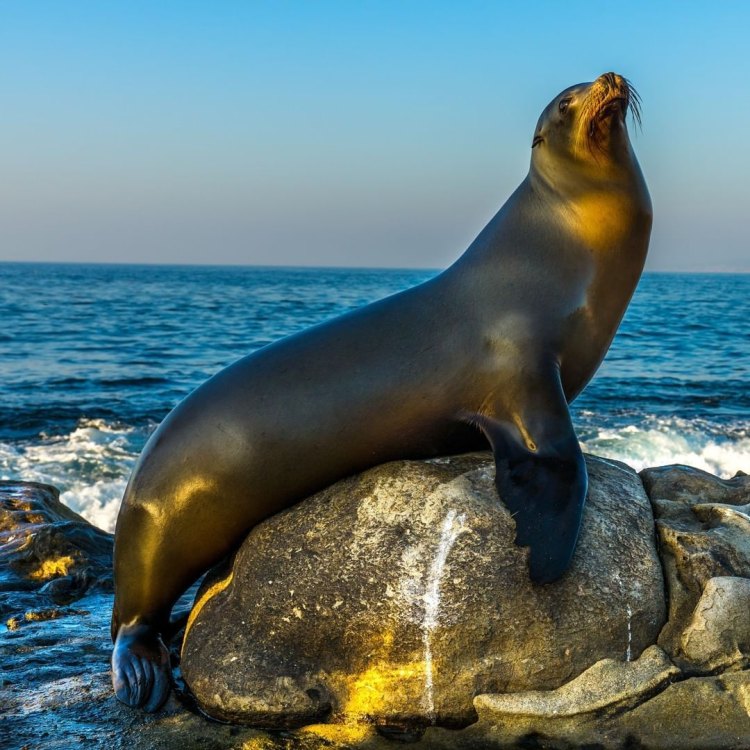
The Misunderstood Marvel: The Fascinating California Sea Lion
Disclaimer: The content provided is for informational purposes only. We cannot guarantee the accuracy of the information on this page 100%. All information provided here may change without prior notice.


